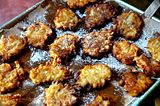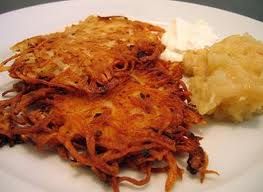“Punting the Pundits” is an Open Thread. It is a selection of editorials and opinions from around the news medium and the internet blogs. The intent is to provide a forum for your reactions and opinions, not just to the opinions presented, but to what ever you find important.
Thanks to ek hornbeck, click on the link and you can access all the past “Punting the Pundits”.
Wednesday is Ladies’ Day
Follow us on Twitter @StarsHollowGzt
Katrina vanden Heuvel: The impoverished Republican poverty agenda
What are Republicans for? We know they are against health-care reform. They voted en masse against it, shut down the government to stop it and have voted nearly 50 times to defund it. We know they are against government spending. They’ve voted for House Budget Committee Chairman Paul Ryan’s draconian budgets, which would slash spending so deeply that even some Republicans are in increasingly open revolt. But those budgets don’t go anywhere. So what do Republicans propose that actually addresses the challenges facing the nation or its people?
Republican leaders are clearly concerned that their policy house is largely vacant. In his dissection of the lost 2012 campaign, Republican National Committee Chair Reince Priebus noted that Republicans suffer a “major deficiency” – the “perception that the GOP does not care about people.” He urged a renewed effort to become “the champion of those who seek to climb the economic ladder.”
Zoë Carpenter: Will Congress Wreck the Nuclear Deal with Iran?
or the first time in three decades, Iran and the United States appear to have established a meaningful diplomatic relationship that disrupts the cycle of escalation towards armed conflict. The interim agreement reached in Geneva on Saturday freezes much of Iran’s nuclear program and exposes the country to extensive inspections by the International Atomic Energy Agency in exchange for modest relief from some economic sanctions. Ultimately, the deal opens the door for a long-term resolution to derail Iran’s nuclear ambitions.
This may be the last, best shot for a diplomatic alternative to a nuclear Iran. Before the deal, Iran could have produced weapons-grade fuel in as little as a month. If Iran upholds its end of the bargain it will lose its stocks of uranium enriched above 5 percent, setting its capabilities back. The chance that Iran will renege on the agreement is real-but so is the risk that US lawmakers will undermine it by passing new sanctions.
GLOUCESTER, Mass. – HORSESHOE CRABS have been around for 475 million years, making them among earth’s oldest animals. They emerge from waters along the Eastern Seaboard during the high tides of full and new moons each May and June to spawn and lay their eggs on sandy beaches. The world’s largest population is concentrated in the Delaware Bay off the coasts of New Jersey and Delaware.
Arriving not far behind the crabs are thousands of small russet-colored shorebirds, known as red knots. They show up just in time to feast on the abundance of crab eggs before resuming their 9,300-mile journey from Tierra del Fuego to the Canadian Arctic. More than half of the red knots along the Western Atlantic flyway converge at this crucial springtime refueling stop, our own avian Serengeti.
But the number of horseshoe crabs has declined over the years. We’d been catching too many to use as bait to snag other sea creatures. That has meant trouble not only for red knots, whose numbers in the Delaware Bay have plummeted by 70 percent since the early 1980s, but for us.
Jessica Valenti: Birth Control Coverage: It’s the Misogyny, Stupid
Today the Supreme Court announced it will hear two cases concerning the Affordable Care Act’s requirement that companies’ insurance plans cover birth control. Hobby Lobby and Conestoga Wood Specialties claim the mandate violates their belief against certain kinds of contraception-pitting female employees’ right to a nondiscriminatory health plan against a company’s religious freedom. (I also fervently hope these companies are fighting as hard to ensure that their unmarried male employees don’t have access to sin-pills like Viagra.) [..]
There’s also an incredibly slippery slope here-if employees’ health plans have to adhere to company owners’ religious beliefs, what happens if your boss doesn’t believe in vaccinations? Or as Guardian columnist Jill Filipovic tweeted, “What if your blood transfusions violate your employer’s religious beliefs? No surgery coverage?” Ilyse Hogue, president of NARAL Pro-Choice America said in a statement, “Allowing this intrusion into personal decisions by their bosses opens a door that won’t easily be shut.”
Laura Gottesdiener: The Empire Strikes Back: How Wall Street Has Turned Housing Into a Dangerous Get-Rich-Quick Scheme — Again
You can hardly turn on the television or open a newspaper without hearing about the nation’s impressive, much celebrated housing recovery. Home prices are rising! New construction has started! The crisis is over! Yet beneath the fanfare, a whole new get-rich-quick scheme is brewing.
Over the last year and a half, Wall Street hedge funds and private equity firms have quietly amassed an unprecedented rental empire, snapping up Queen Anne Victorians in Atlanta, brick-faced bungalows in Chicago, Spanish revivals in Phoenix. In total, these deep-pocketed investors have bought more than 200,000 cheap, mostly foreclosed houses in cities hardest hit by the economic meltdown.
Wall Street’s foreclosure crisis, which began in late 2007 and forced more than 10 million people from their homes, has created a paradoxical problem. Millions of evicted Americans need a safe place to live, even as millions of vacant, bank-owned houses are blighting neighborhoods and spurring a rise in crime. Lucky for us, Wall Street has devised a solution: It’s going to rent these foreclosed houses back to us. In the process, it’s devised a new form of securitization that could cause this whole plan to blow up — again.
Ellen Brown: Monsanto, the TPP, and Global Food Dominance
“Control oil and you control nations,” said US Secretary of State Henry Kissinger in the 1970s. “Control food and you control the people.”
Global food control has nearly been achieved, by reducing seed diversity with GMO (genetically modified) seeds that are distributed by only a few transnational corporations. But this agenda has been implemented at grave cost to our health; and if the Trans-Pacific Partnership (TPP) passes, control over not just our food but our health, our environment and our financial system will be in the hands of transnational corporations.
According to an Acres USA interview of plant pathologist Don Huber, Professor Emeritus at Purdue University, two modified traits account for practically all of the genetically modified crops grown in the world today. One involves insect resistance. The other, more disturbing modification involves insensitivity to glyphosate-based herbicides (plant-killing chemicals). Often known as Roundup after the best-selling Monsanto product of that name, glyphosate poisons everything in its path except plants genetically modified to resist it.



 In a rare occurrence Thanksgiving and Hanukkah converge this year, with the first night of the eight day holiday beginning Wednesday night, making Thursday the first day of Hanukkah. So in many households it will be carve the turkey and pass the latkes and light the second candle of the menorah on Thursday night. The last time
In a rare occurrence Thanksgiving and Hanukkah converge this year, with the first night of the eight day holiday beginning Wednesday night, making Thursday the first day of Hanukkah. So in many households it will be carve the turkey and pass the latkes and light the second candle of the menorah on Thursday night. The last time  2 medium-sized sweet potatoes, peeled
2 medium-sized sweet potatoes, peeled These pancakes look just like potato latkes. You can serve them either as a dessert or a side dish during Hanukkah.
These pancakes look just like potato latkes. You can serve them either as a dessert or a side dish during Hanukkah. It isn’t Hanukkah without Potato Latkes, those wonderful, crispy pancakes of shredded potato and onion served with apple sauce. It’s lot easier than when I was growing up in the 50’s. Back then we had to shred them with a metal grater that often resulted in some shredded knuckles, too. Food processors have saved a lot of knuckles and teary eye from shredding the onion.
It isn’t Hanukkah without Potato Latkes, those wonderful, crispy pancakes of shredded potato and onion served with apple sauce. It’s lot easier than when I was growing up in the 50’s. Back then we had to shred them with a metal grater that often resulted in some shredded knuckles, too. Food processors have saved a lot of knuckles and teary eye from shredding the onion.
Recent Comments